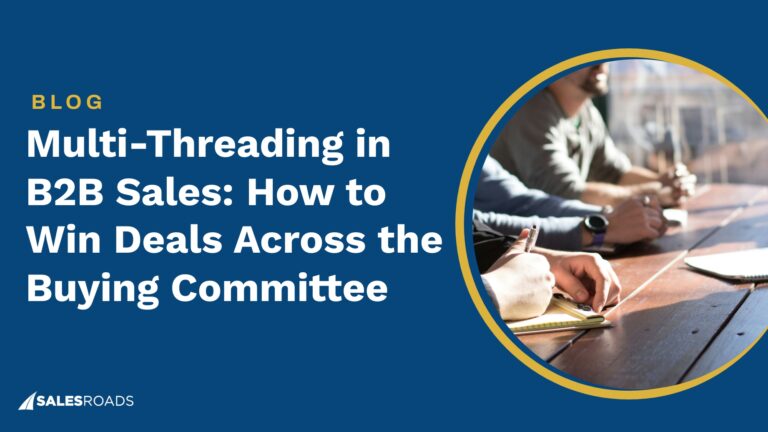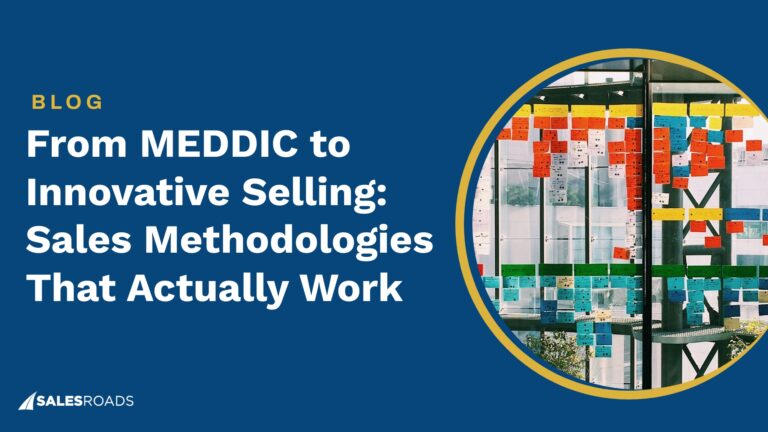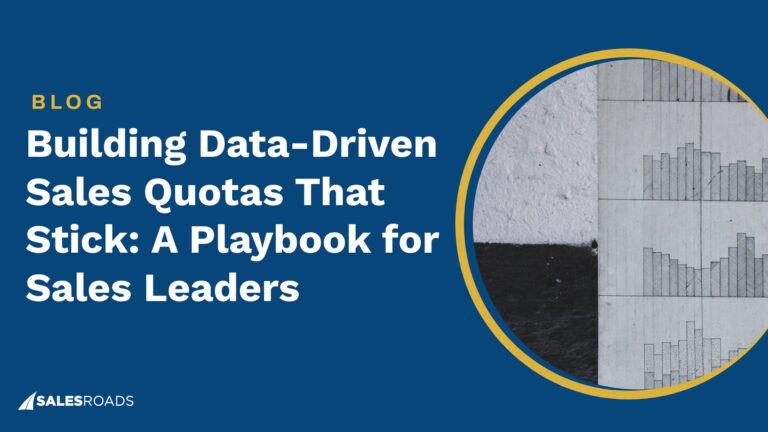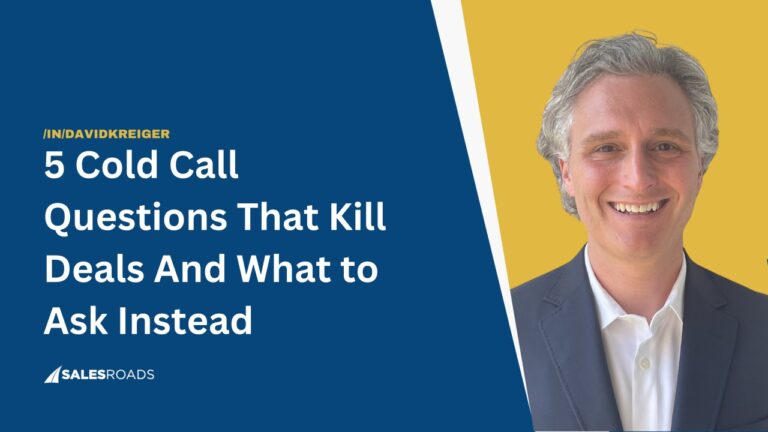While your competitors waste resources chasing unqualified leads, smart sales organizations are adopting a more strategic approach: Account-Based Marketing (ABM).
Instead of casting the widest possible net and hoping for the best, ABM flips the traditional funnel on its head, focusing your entire go-to-market strategy on the accounts that matter most to your business.
What Is Account-Based Marketing (ABM)?
Account-based marketing is a highly targeted B2B growth strategy that aligns sales and marketing efforts to engage specific high-value accounts. It focuses your lead generation tactics on decision-makers within a shortlist of ideal companies.
With ABM, your team prioritizes quality over quantity. The strategy is built around identifying the right accounts, delivering personalized messaging, and building strong relationships that convert faster and deliver more value over time.
For sales teams, ABM strategies offer a smarter way to use limited resources by focusing outreach on accounts that actually fit your solution. The effectiveness of this approach is proven:
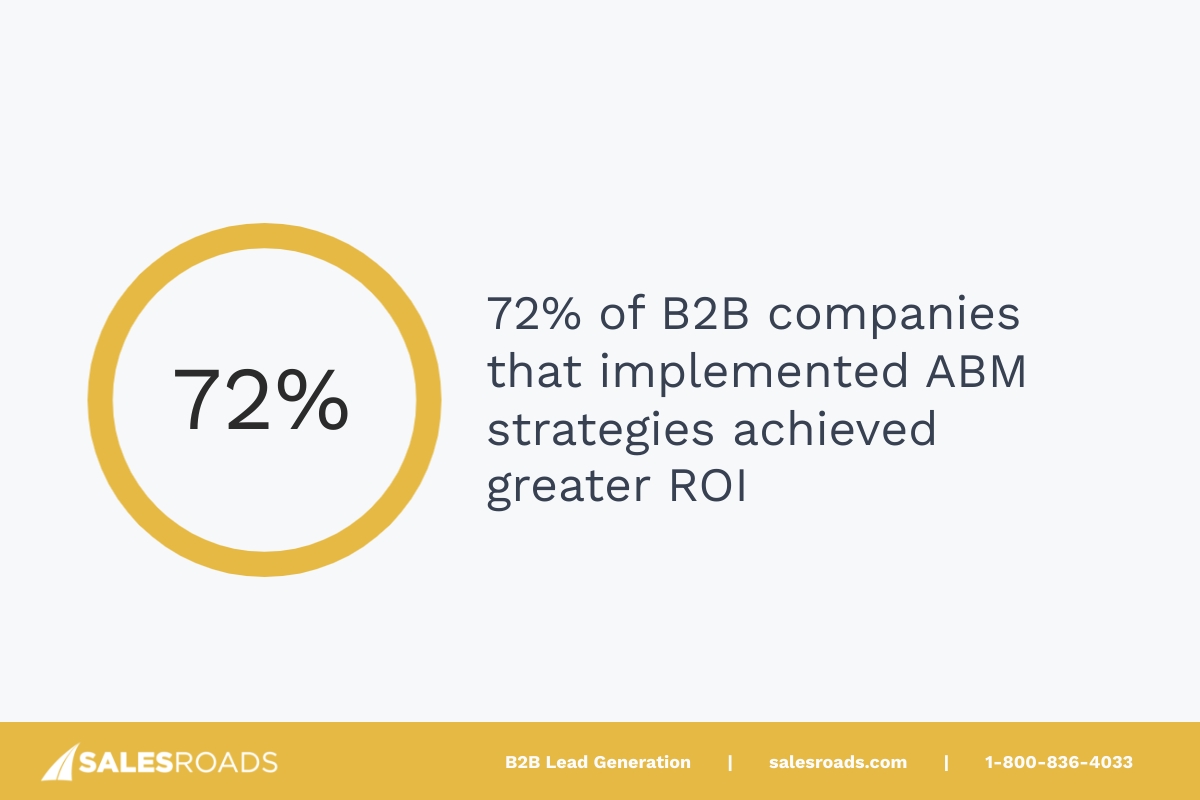
72% of B2B people who used ABM in 2021 reported increased ROI compared to other forms of lead generation.
The Benefits of an Account-Based Marketing Strategy
ABM strategies are tailor-made for B2B sales teams who want to close bigger deals, faster. Here’s how account-based marketing tactics give your sales efforts a boost:
Higher Conversion Rates With Focused Outreach
ABM strategies boost conversion rates because they’re designed to reach the right people at the right accounts with the right value proposition.
Instead of spending time chasing cold, unqualified leads, sales teams using account-based marketing tactics focus their cold calls and emails on companies that already fit their ideal customer profile.
This hyper-targeted approach leads to more relevant conversations and better engagement. Decision-makers are more likely to respond when the outreach is personalized to their role, pain points, and goals.
That’s why ABM consistently outperforms traditional lead generation when it comes to turning outreach into actual pipeline.
Shorter, More Efficient Sales Cycles
Sales cycles can drag on when reps waste time qualifying leads that aren’t a good fit. ABM eliminates that delay by focusing only on accounts that are already well-aligned with your solution. With strategic targeting and personalized messaging, your outreach gets to the point faster and gets results sooner.
Because account-based marketing strategies prioritize quality over quantity, each interaction is more intentional. Cold emails reference specific business needs. Cold calls speak directly to decision-makers.
That level of precision reduces friction, builds trust quickly, and accelerates the buying journey.
Deeper, Longer-Lasting Customer Relationships
ABM isn’t just about closing the deal—it’s about building long-term partnerships. Account-based marketing tactics encourage multiple, personalized touchpoints across an account, ensuring you’re not just talking to one contact but engaging the full buying committee.
That approach helps you understand the account’s needs from different angles and positions your team as a trusted resource.
This kind of relationship-building is critical in outbound sales, where trust and familiarity can make or break a deal. By staying consistent, relevant, and helpful throughout the buyer journey, ABM sets the stage for long-term customer retention, upsells, and account expansion down the road.
Stronger Alignment Between Sales and Marketing
One of the biggest advantages of account-based marketing strategies is the tight alignment they create between sales and marketing.
Instead of working in silos, both teams collaborate on a shared list of high-value target accounts. They craft messaging together, coordinate timing, and ensure every touchpoint is intentional and personalized.
This alignment removes guesswork from your outreach efforts. Sales reps know that the leads are already qualified and strategically chosen. Sales, in turn, support those accounts with tailored messaging that backs up the sales conversation.
What Are the Three Pillars of ABM?
Successful ABM strategies are built on three core pillars: targeting, content, and continuity. Each one plays a critical role in helping your outbound team land and expand within high-value accounts.
Targeting
The first—and arguably most important—pillar of ABM is precise targeting.
It starts with building an ICP and selecting accounts that match it. From there, you identify the key decision-makers and influencers inside those accounts.
Outbound sales teams can then build highly specific cold calling and cold emailing campaigns tailored to each account’s needs, goals, and pain points. This isn’t just about getting in the door—it’s about getting in the right door.
Content
Content isn’t just for inbound. In ABM, your content fuels outbound efforts, too.
Personalized messaging—crafted for a specific account or persona—makes your cold emails stand out and your calls more relevant.
This could include case studies that match the target’s industry, tailored email sequences that address their challenges, or even LinkedIn messages that reference recent company news.
Effective account-based marketing tactics use content as a conversation starter, not a sales pitch.
Continuity
ABM isn’t a one-and-done approach. Continuity ensures that your outreach stays consistent, coordinated, and value-driven over time. It means following up strategically, looping in different stakeholders, and keeping your message aligned across every channel—whether it’s email, phone, or even direct mail.
For sales teams, continuity is the glue that holds your ABM strategy together. It builds familiarity and trust, increasing the odds of moving the deal forward.
Top 10 Account-Based Marketing Tactics for Better Sales
If you’re running outbound sales, you already know the value of precision. ABM takes that precision to the next level. Rather than casting a wide net, ABM strategies focus your resources on the accounts most likely to convert and deliver long-term value.
Below are 10 practical account-based marketing tactics that outbound teams can implement to boost conversions, shorten sales cycles, and close more deals.
1. Build a Target Account List That Matches Your ICP
The foundation of any effective account-based marketing strategy is a well-defined ICP. Before launching into outreach, your sales team needs to be crystal clear on which types of companies are most likely to benefit from your solution.
Your ICP should include firmographics like industry, company size, and region, but it should also go deeper. Look at technology stacks, hiring trends, and even recent funding rounds.
These data points help narrow your focus and eliminate low-fit leads.
Once your ICP is in place, build a target account list that aligns closely with it. Use tools like ZoomInfo, Apollo, or LinkedIn Sales Navigator to filter accounts and ensure every name on the list meets your criteria.
ABM strategies thrive on precision. A narrow, high-quality lead list gives your cold calls and cold emails a better shot at landing and converting.
2. Map Key Decision-Makers and Influencers Within Each Account
Account-based marketing tactics rely on knowing who’s involved in the buying decision. It’s rarely just one person. In B2B sales, you’re often dealing with committees of four to ten stakeholders across different departments.
Once you’ve identified your target account, map out the internal org chart as much as possible.
Who’s the budget holder? Who’s the technical evaluator? Who’s likely to block the deal if not engaged early?
Use LinkedIn and your sales intelligence tools to uncover job titles and reporting lines. Then, tailor your outreach accordingly.
Don’t send the same message to the CTO and the procurement manager—each has different priorities. Mapping stakeholders helps you navigate accounts smarter and avoid dead ends during the sales cycle.
3. Create Account-Specific Sequences and Cadences
Generic outreach doesn’t cut it in ABM. You need to build sequences and cadences that reflect the unique context of each account.
That means adjusting timing, messaging, and touchpoints based on industry, pain points, and where they are in the buying journey.
For example, if you’re targeting a SaaS company that just raised funding, your sequence might highlight ROI and scalability. If you’re reaching out to a healthcare organization, compliance and data security might be more relevant.
Use your outbound tools—like Salesloft or Outreach—to structure multistep sequences that include a mix of cold emails, calls, and social touches. Customization at this level shows prospects you’ve done your homework and that your solution is worth their time.
4. Leverage Cold Calling to Start High-Impact Conversations
Cold calling plays a powerful role in ABM strategies, especially when paired with research and relevance. A good cold call isn’t just a numbers game. It’s a conversation starter tailored to the specific account.
Before picking up the phone, review the contact’s LinkedIn activity, recent company news, or key pain points in their industry. Reference this information directly in your opener.
That relevance sets your call apart from the dozens of generic pitches they ignore daily.
ABM calls should be thoughtful and value-driven. Focus on opening the door to a deeper conversation, not closing the deal on the first try. Voicemails can be useful too if crafted around the same principles: relevance, clarity, and next steps.
5. Personalize Cold Emails Based on Account Insights
Account-based marketing tactics demand a higher level of email personalization than traditional outbound. It’s not enough to drop a first name and company name into a template. Your cold email needs to reflect actual research and insight about the target account.
Start with a strong subject line that hints at relevance. Then, in the body, mention something specific: a recent product launch, a job opening, or a quote from the CEO. The more tailored the message, the more likely it is to get a response.
Finish with a clear, low-friction CTA—something that feels easy to say yes to.
6. Use Sales Intelligence Tools to Power Your Outreach
Sales intelligence tools are a core part of modern ABM strategies. They give outbound teams the context needed to craft better messages, prioritize the right accounts, and time outreach effectively.
Tools like Cognism, Clearbit, and LinkedIn Sales Navigator help you uncover buyer intent signals, track job changes, and monitor company activity. For example, if a target account recently adopted a new CRM, that could be the perfect opening to pitch your integration solution.
These insights are gold for cold calls and emails. They let you go beyond surface-level personalization and show true relevance. ABM tactics that are informed by real-time data simply perform better because they meet the buyer where they are, not where you assume they are.
7. Stay Persistent With Multi-Channel Follow-Up
In ABM, one touchpoint is never enough. Persistence is key—but so is variety.
Following up through multiple channels (email, phone, LinkedIn, even direct mail) increases your chances of getting noticed and staying top of mind.
For example, if a contact didn’t reply to your email, call them the next day and reference that message. If they don’t answer the phone, connect with them on LinkedIn and share a relevant article or insight.
The goal is to create a surround-sound effect. Each touchpoint builds familiarity and reinforces your value. And when done respectfully, not aggressively, it shows the prospect you’re serious about helping, not just selling.
8. Align Sales and Marketing on Messaging and Timing
ABM is only effective when sales and marketing work from the same playbook. That means aligning on target accounts, messaging, timing, and overall strategy.
Marketing should support outbound efforts with assets that sales can actually use—one-pagers, case studies, battle cards, and more. In return, sales should share feedback on what messaging resonates and what objections come up.
Regular check-ins between sales and marketing help tighten this loop. When everyone is on the same page, ABM strategies become more efficient, and your outreach feels more consistent and credible to the buyer.
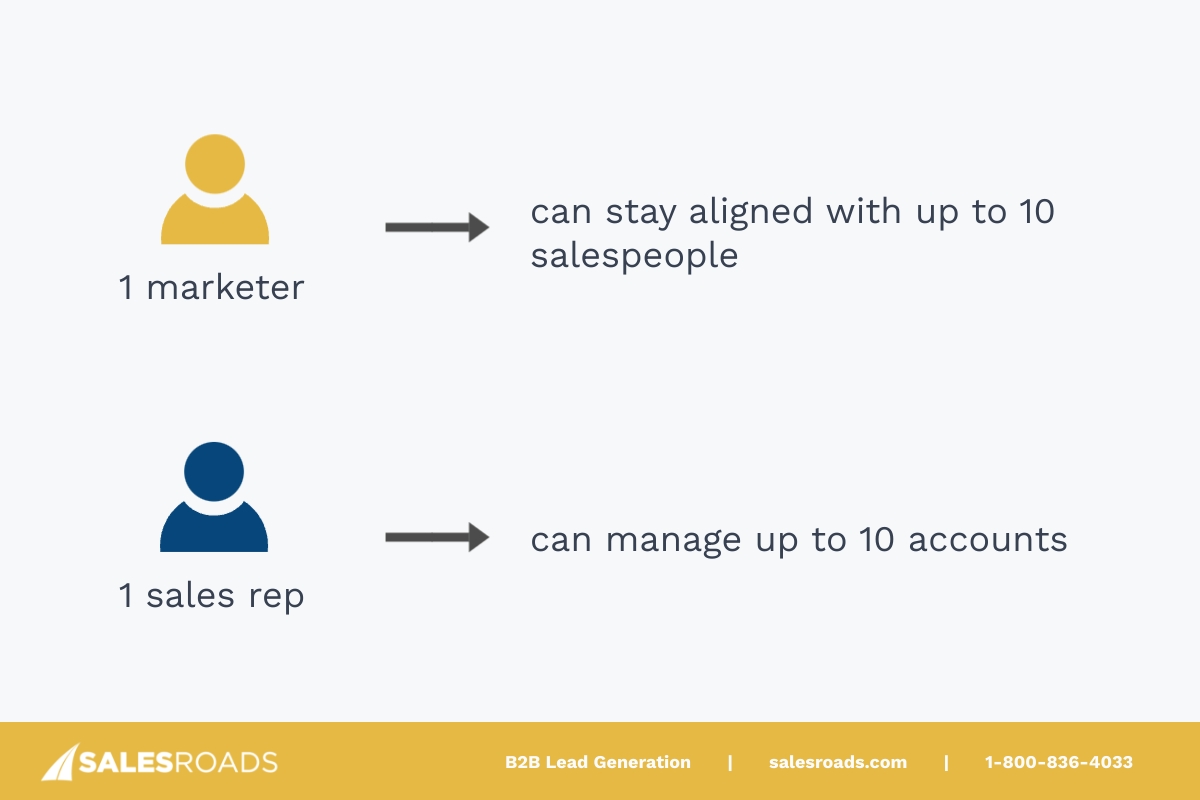
According to HubSpot, one marketer can typically stay aligned with up to 10 salespeople on average, and each salesperson can manage up to 10 accounts, making this collaborative approach both scalable and manageable.
9. Send Relevant Case Studies and Social Proof
Social proof is a powerful trust builder, especially when it’s tailored to the account you’re targeting. ABM tactics work best when you’re not just saying you can help, but proving it with results from similar companies.
If you’re reaching out to a mid-market fintech firm, share a case study from another fintech customer of similar size. Highlight the metrics that matter to them—like customer acquisition cost, compliance readiness, or time to value.
Don’t just attach a PDF and hope they open it. Reference a key result directly in your email or cold call: “We helped a similar firm reduce onboarding time by 40%.”
That kind of proof helps you build credibility faster and moves the conversation forward.
10. Monitor Engagement to Adjust Tactics in Real-Time
Account-based marketing strategies should never be static. Track engagement signals to know when to double down—and when to pivot.
Use tools that show when a contact opens your email, clicks a link, or visits your website. If someone views your pricing page twice in one day, that’s your cue to follow up with urgency. If they haven’t opened any messages, it may be time to try a different angle or channel.
Outbound sales teams that monitor account engagement in real time can respond with agility. This not only improves your chances of booking a meeting, it shows the prospect you’re paying attention, which can be the first step toward building trust.
Bottom Line
Account-based marketing strategies give sales teams the structure and precision needed to close high-value deals with less waste.
Instead of chasing low-fit leads, ABM strategies focus your resources on the accounts that actually matter—those that look like your best customers and act like they’re ready to buy.
Your team can drive higher conversion rates, shorten the sales cycle, and build long-term customer relationships.





